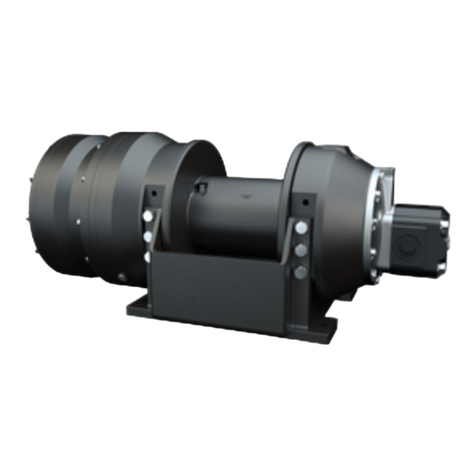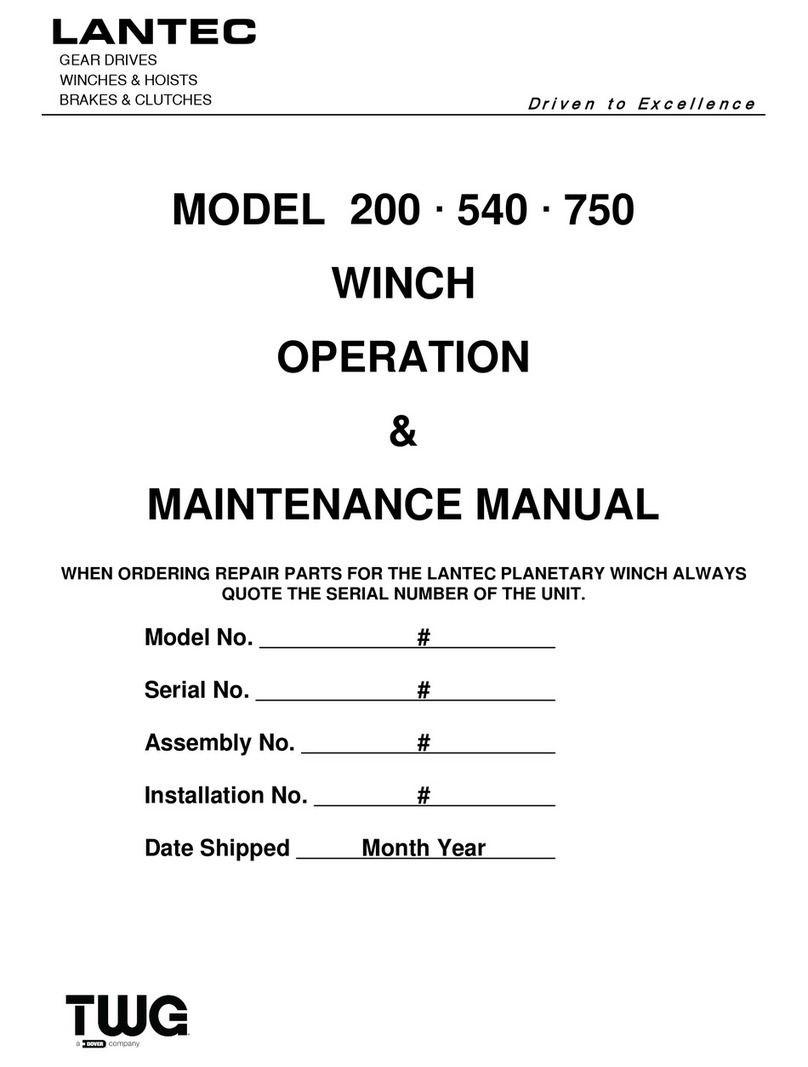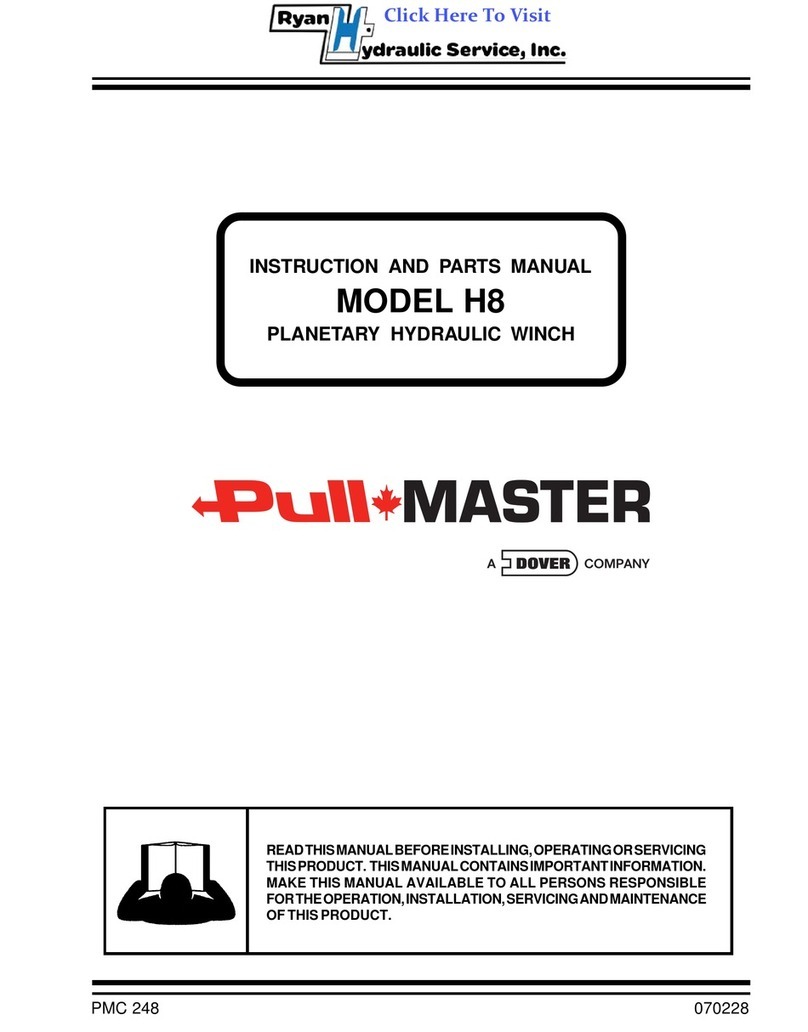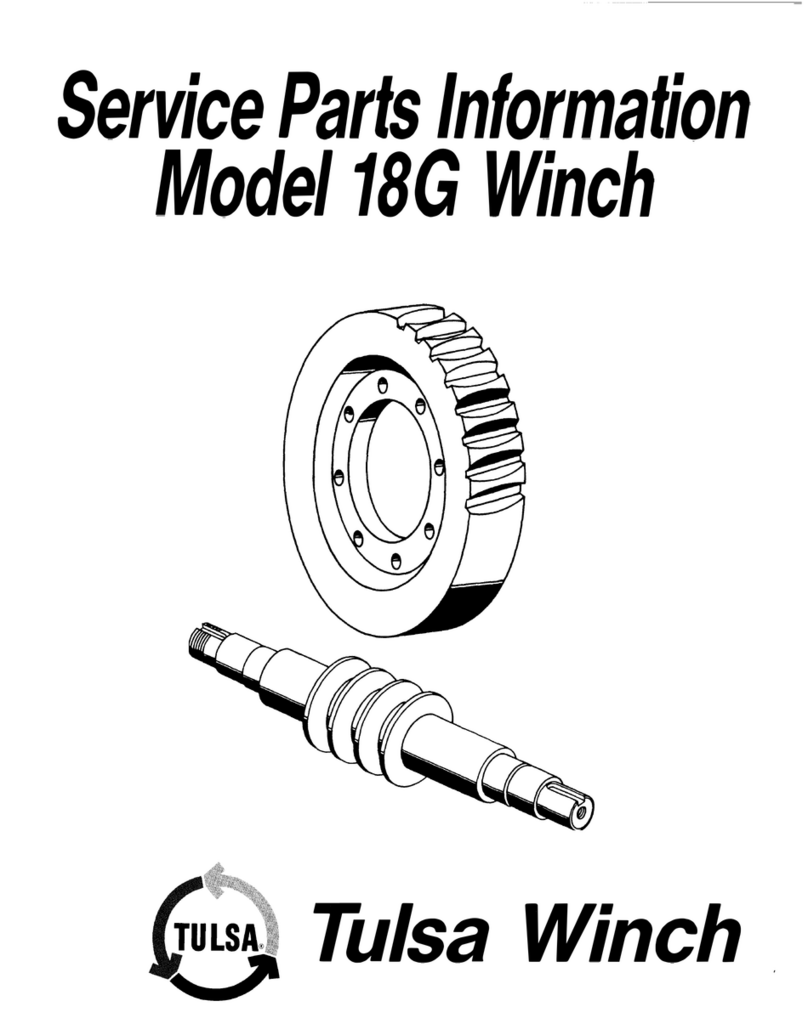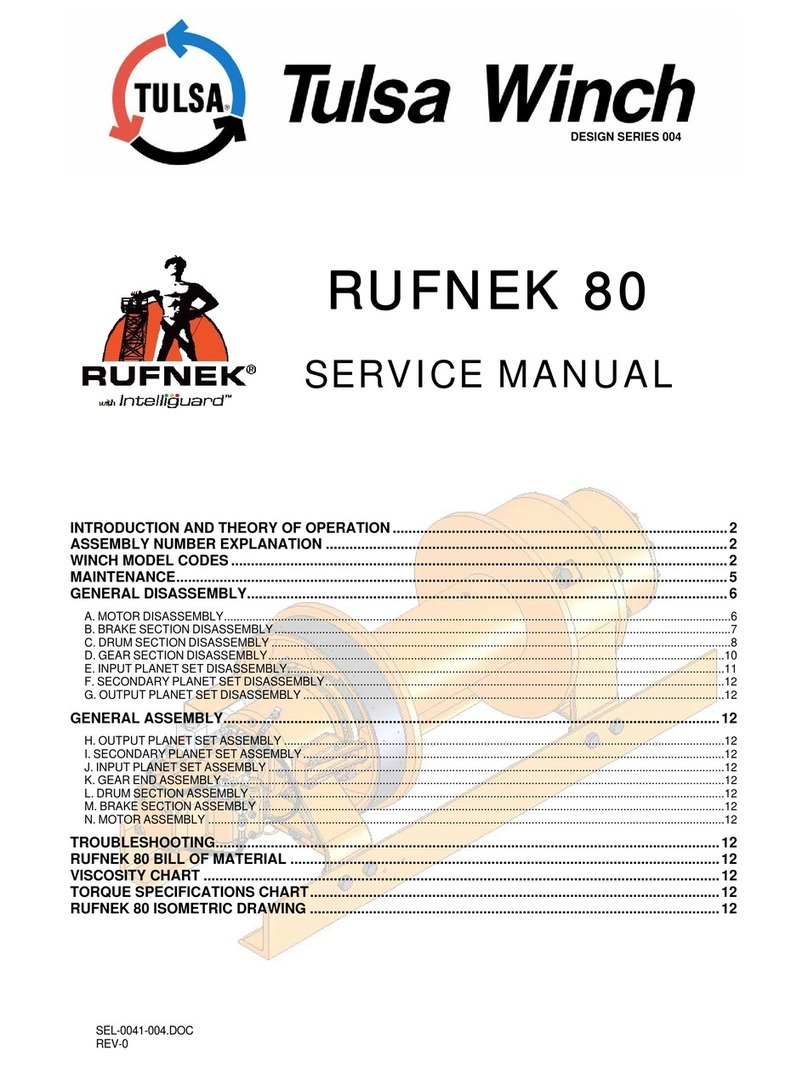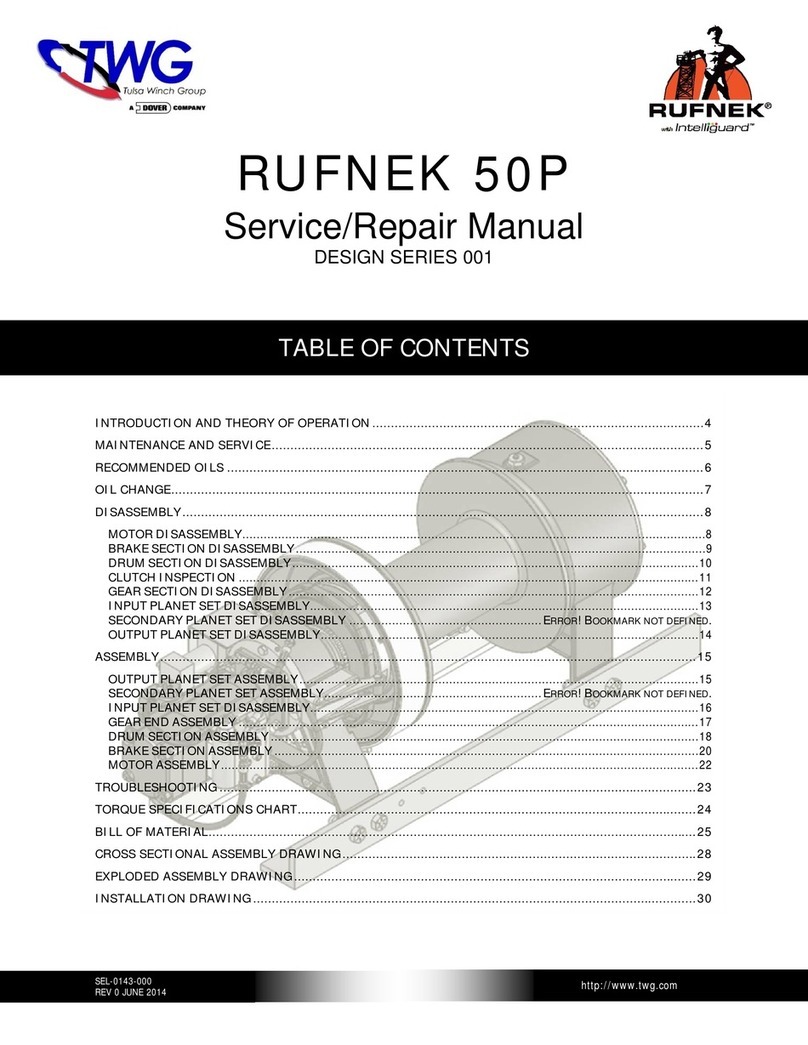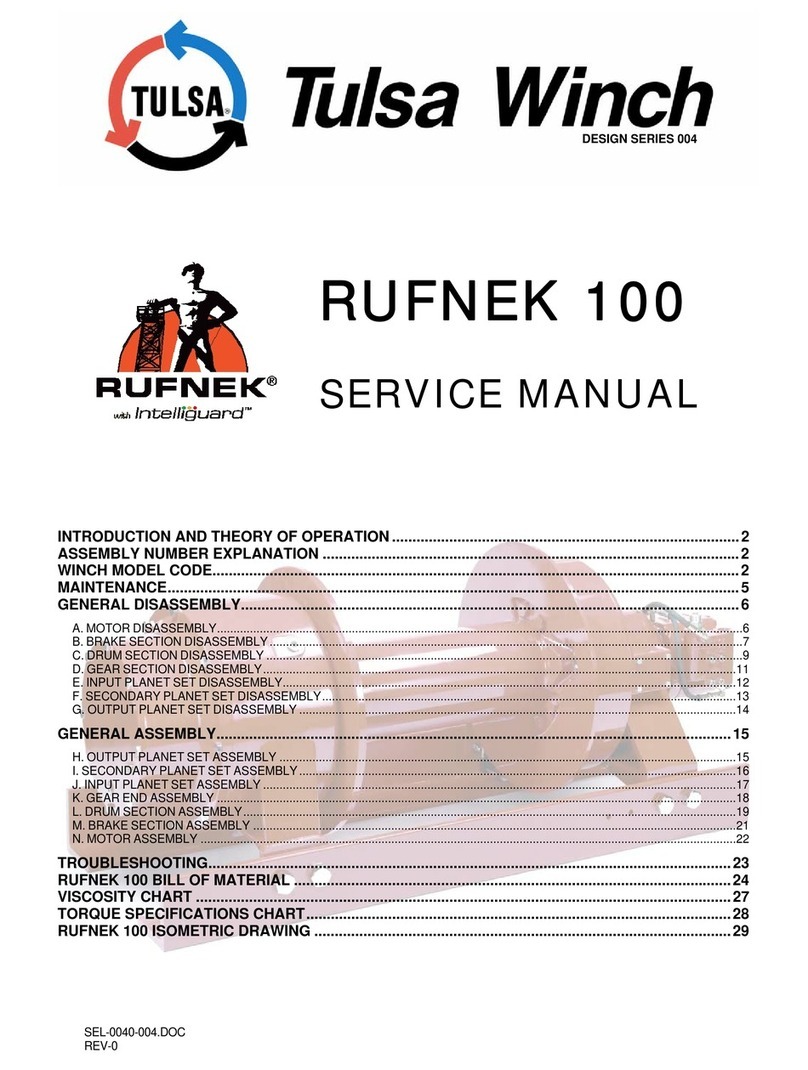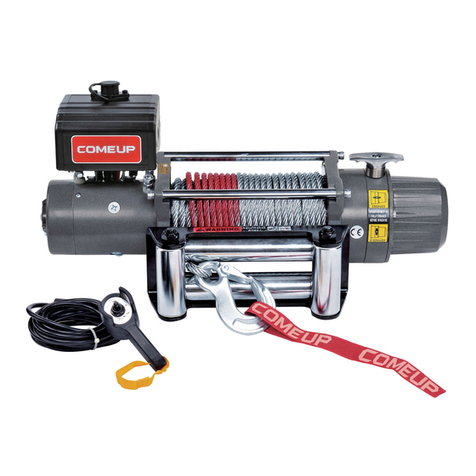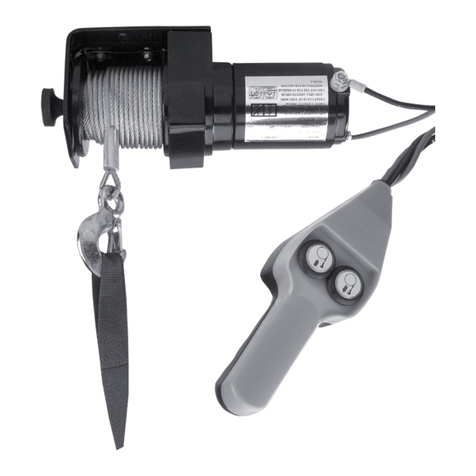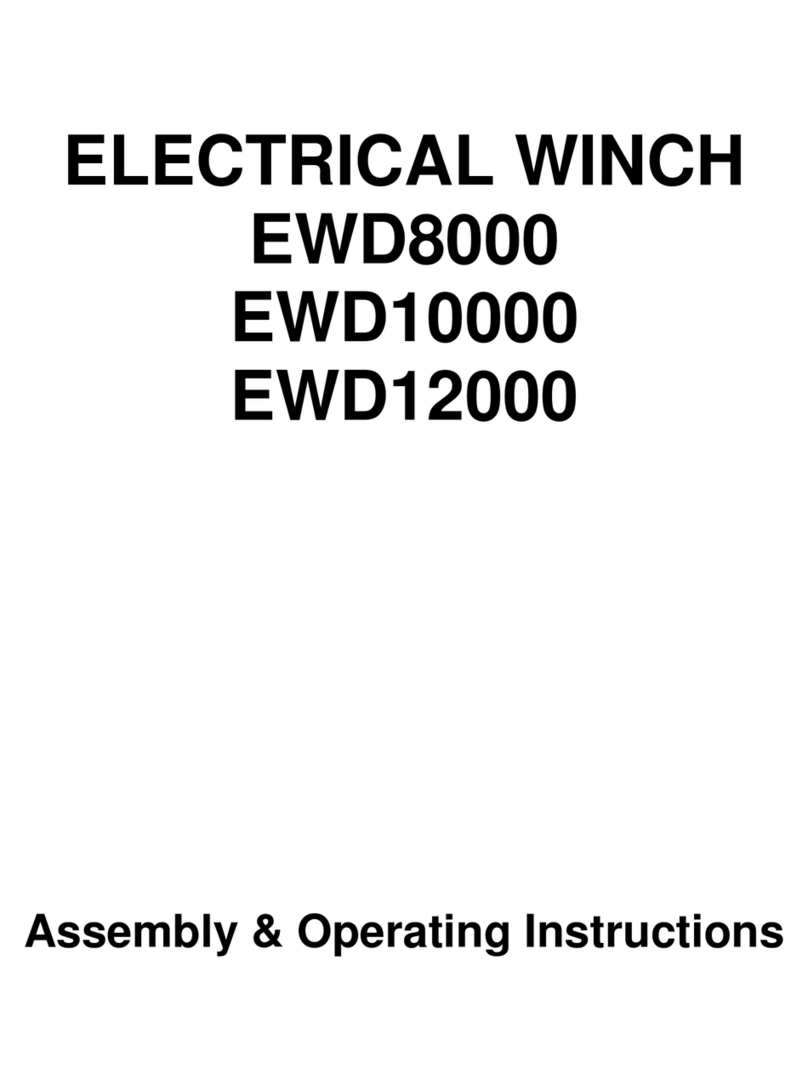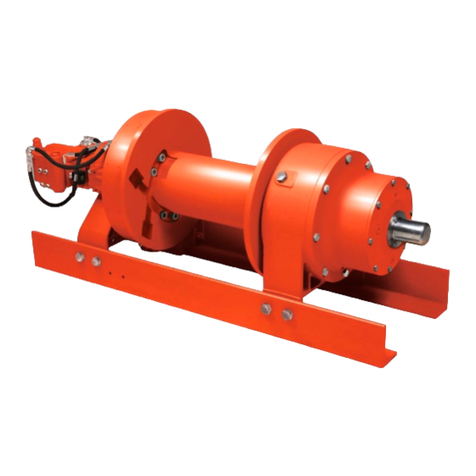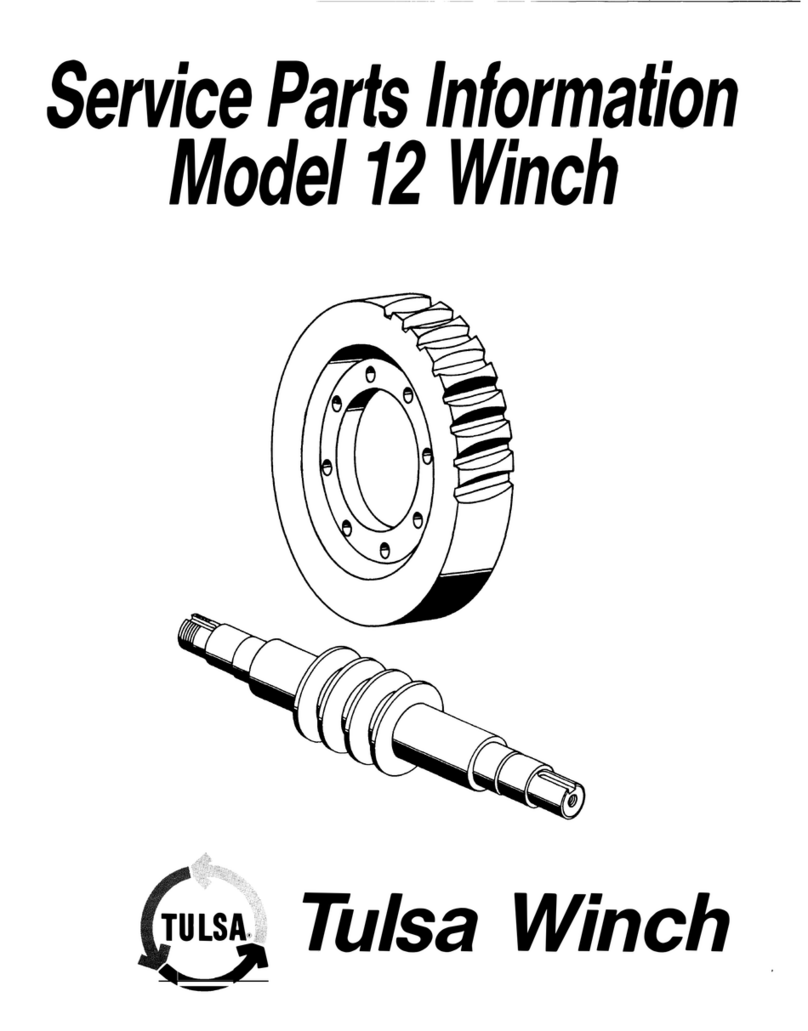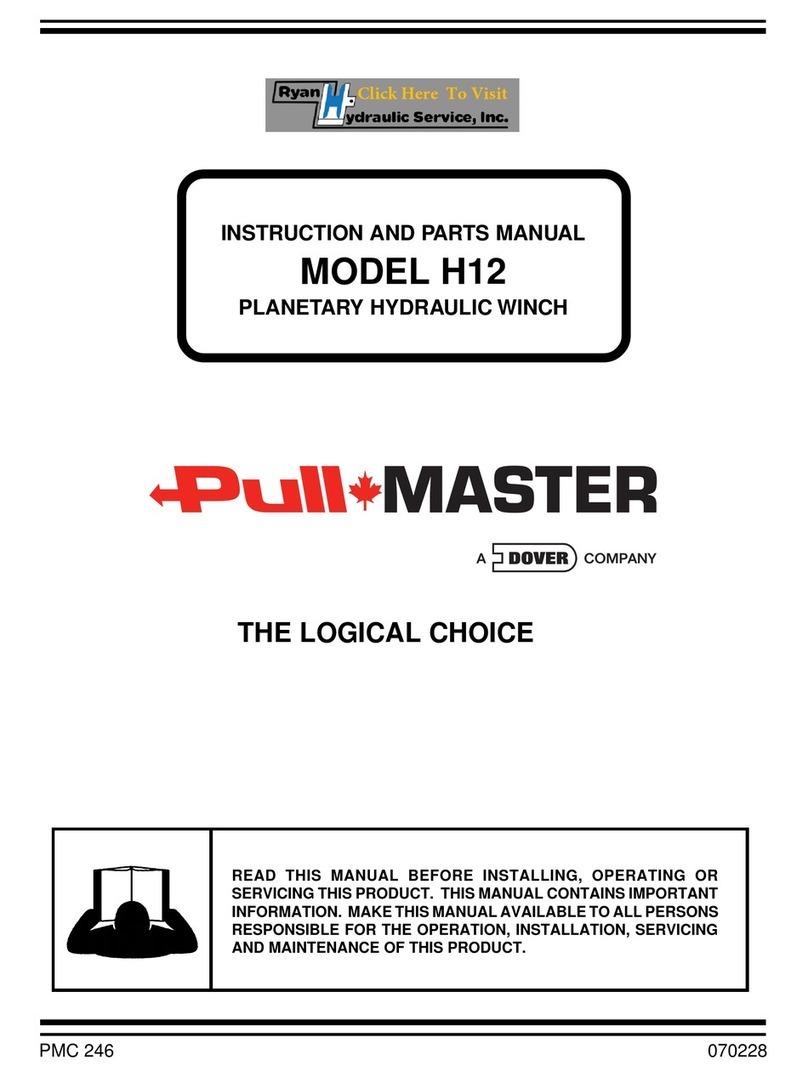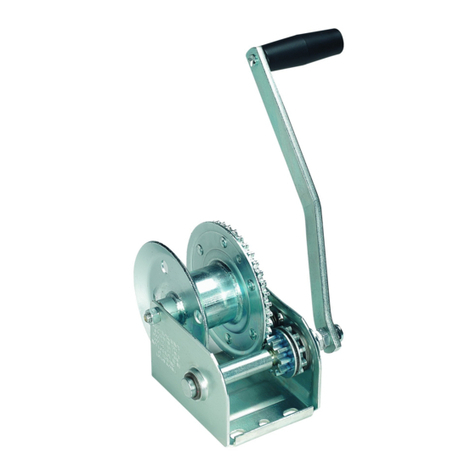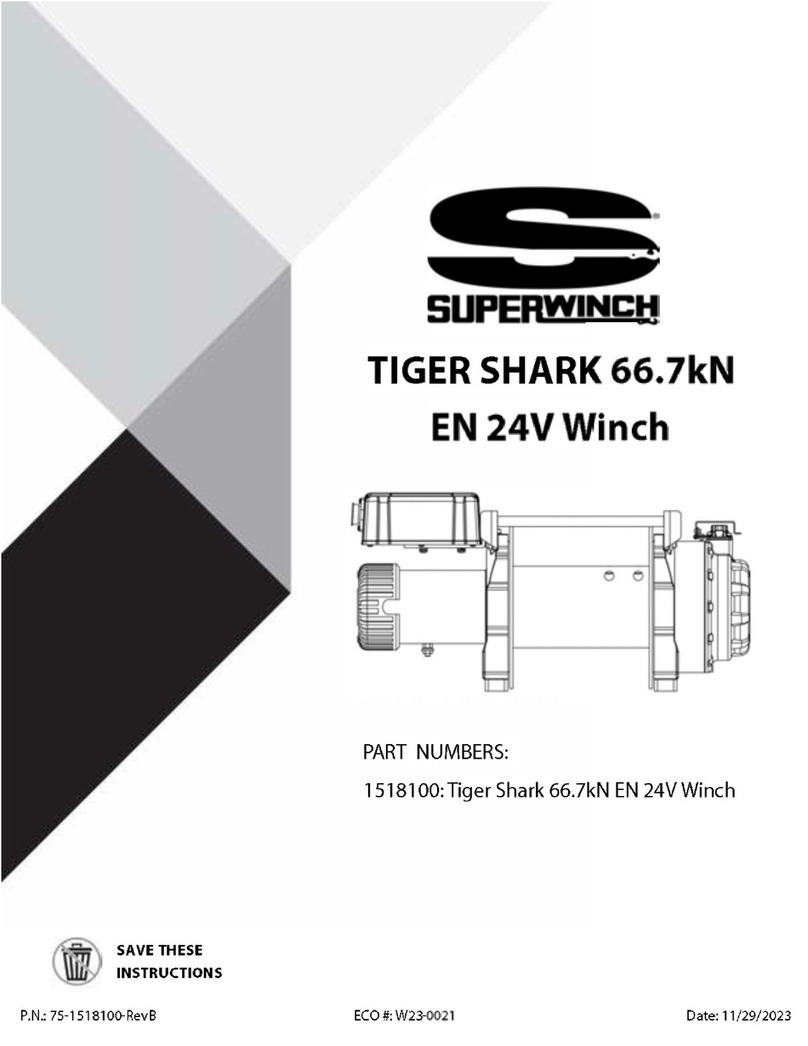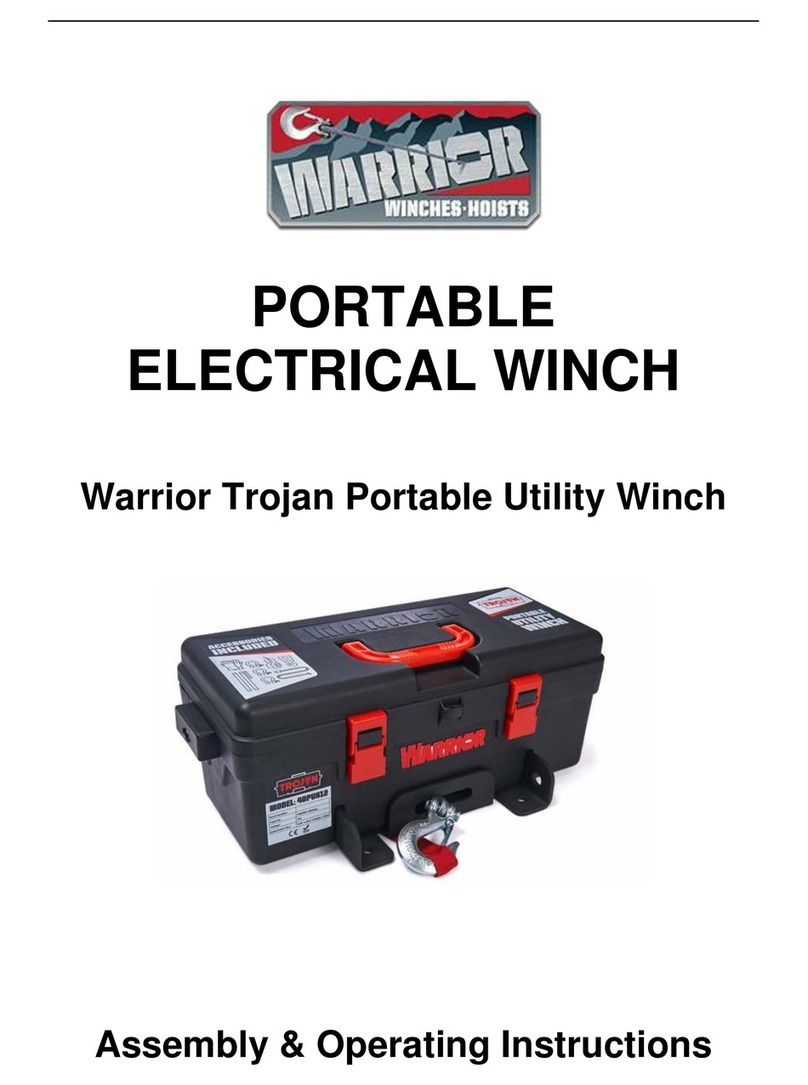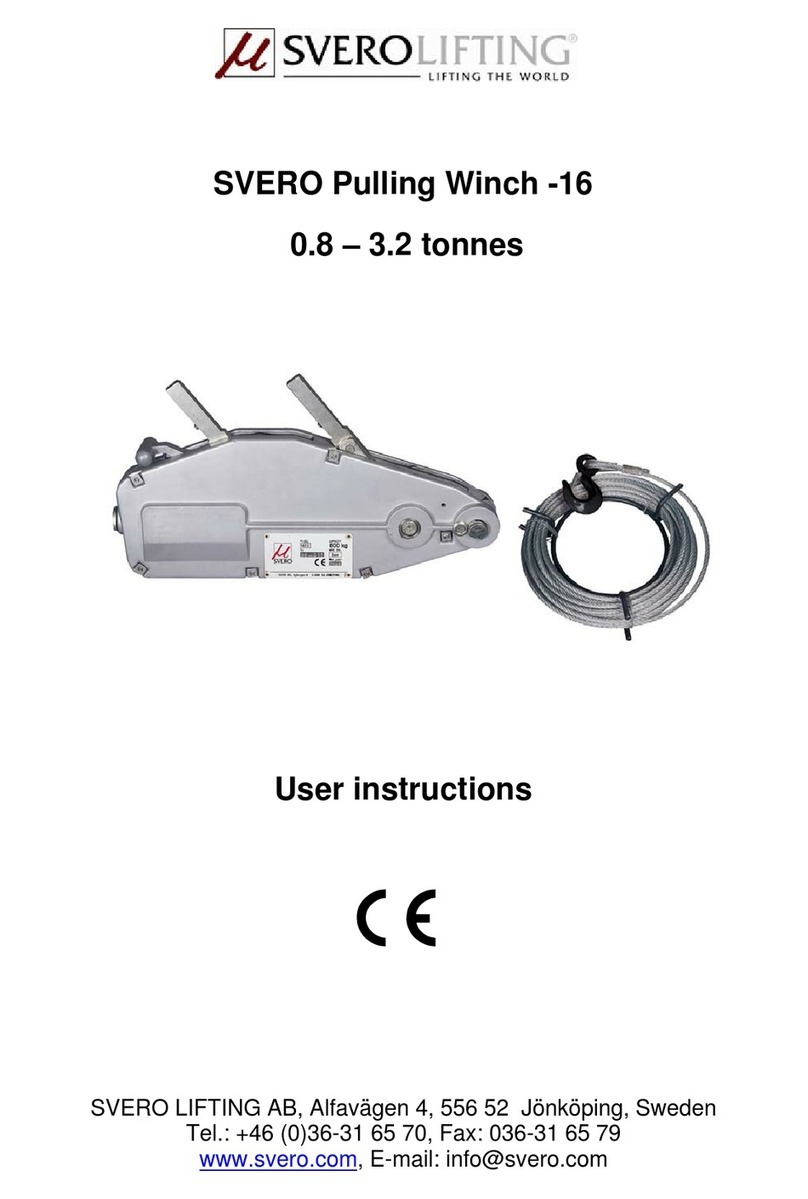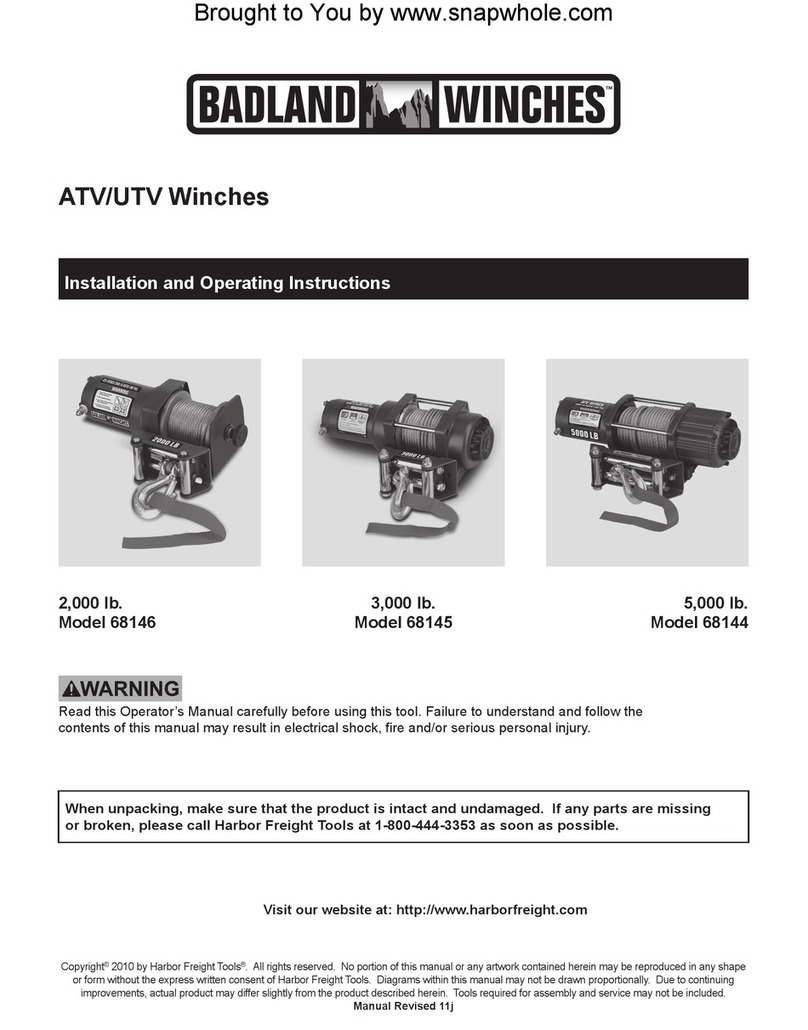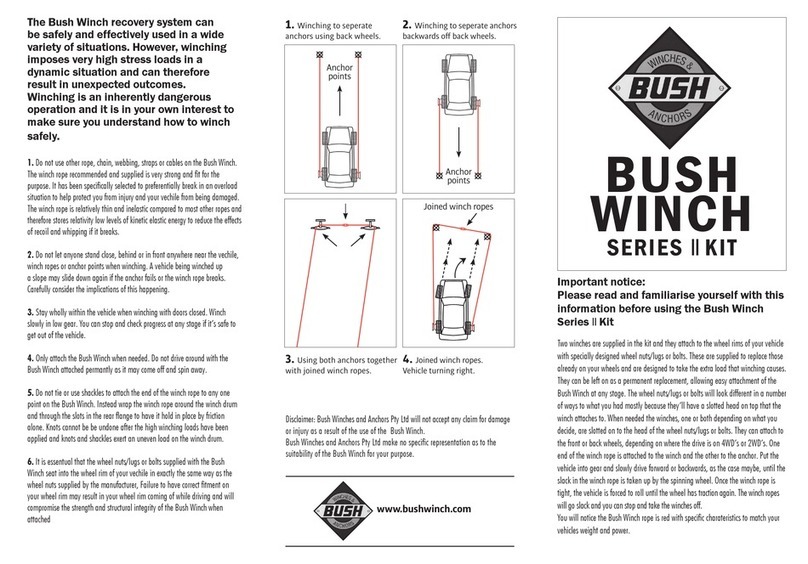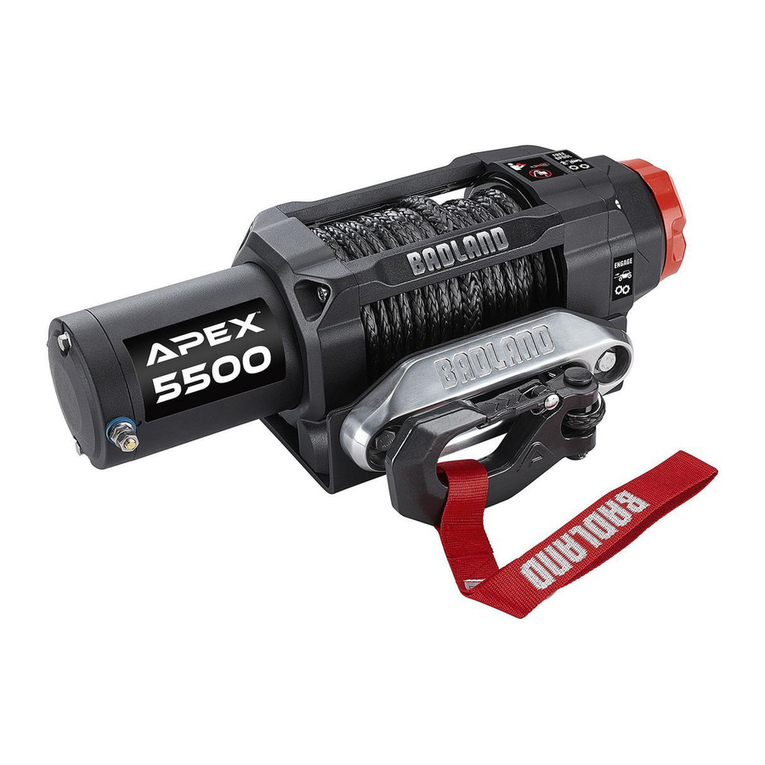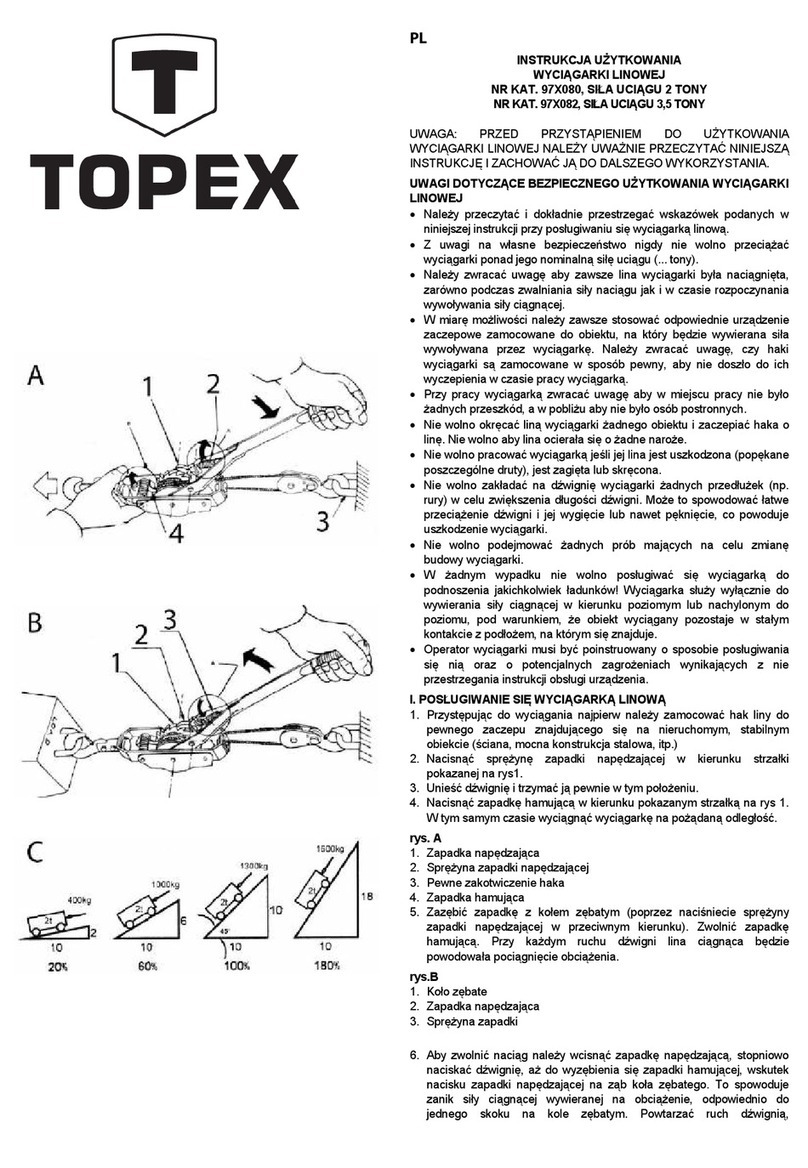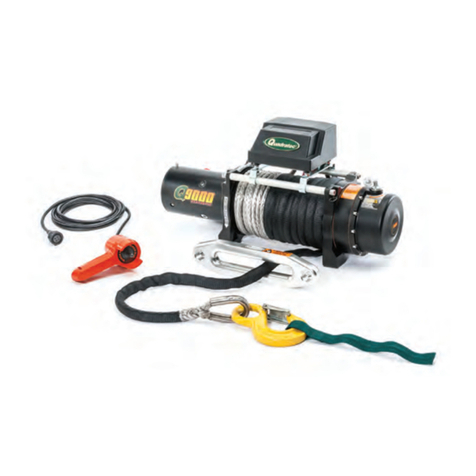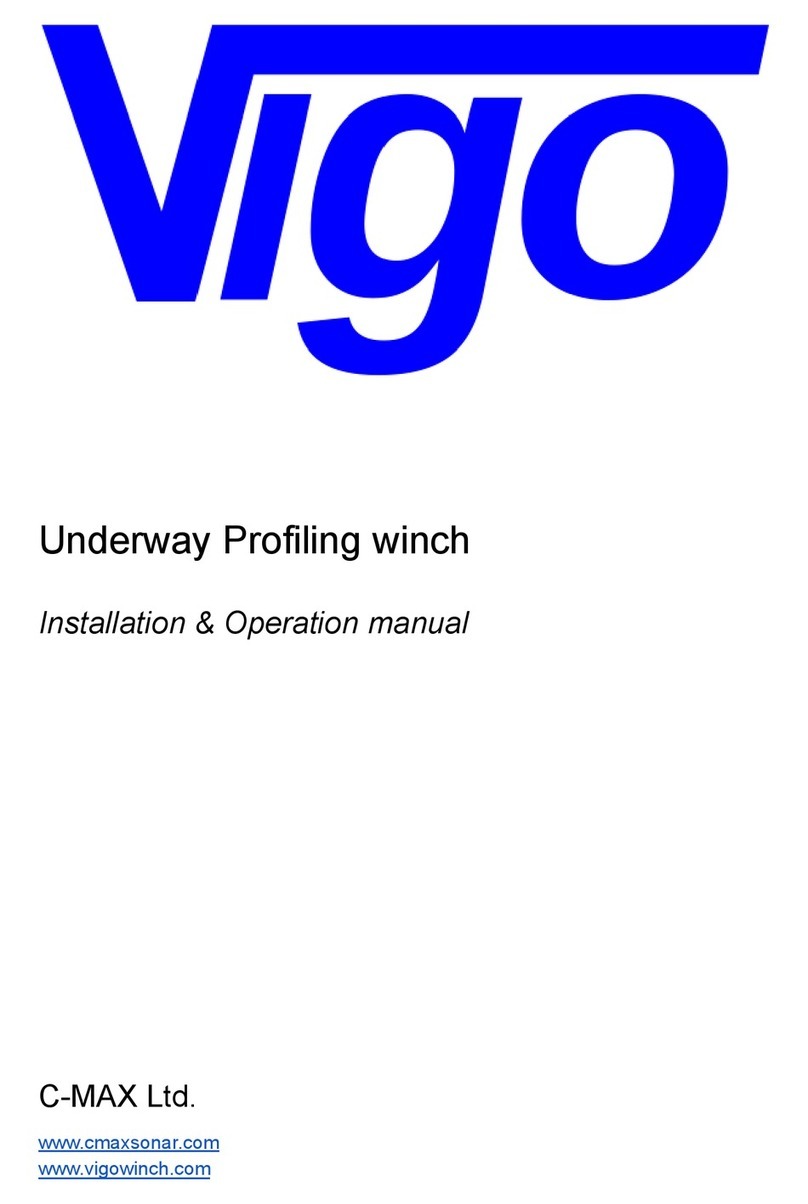
9
ASSEMBLY
1. Thoroughly clean all parts. Replace those that show wear or damage.
2. Inspect the drum
(Item 5)
for structural integrity and the gear teeth for excessive wear, then
replace if necessary.
3. Attach the output shaft
(Item 32)
to the side plate
(Item 50)
with six capscrews
(Item 62)
,
making sure the vent
(Item 30)
is oriented properly, then torque them to specification
(see
Torque Specifications Chart on page 15 of this manual)
.
4. Install the retaining ring
(Item 3)
onto the output shaft
(Item 32)
.
5. Attach the rods
(Item 43)
and base
(Item 12)
to the side plate
(Item 50)
with twelve capscrews
(Items 2 & 60)
. Torque to specification
(see Torque Specifications Chart on page 15 of this
manual)
.
6. If necessary, install a new bearing
(Item 28)
and oil seal
(Item 7-3)
into the drum.
7. Lay the unit down so that the rods
(Item 43)
and base
(Item 12)
are pointing up. Set the drum
(Item 5)
onto the output shaft
(Item 32)
being careful not to damage the seal
(Item 7-3)
.
8. Install the planet gearset
(Item 4)
into the drum
(Item 5)
, making sure it’s installed correctly
onto the shaft
(Item 32)
.
9. Insert the sun gear
(Item 8)
into the planet gearset
(Item 4)
. The slot in the sun gear must be
installed down, facing the output shaft.
10. Install a new o-ring
(Item 7-6)
and, if necessary, a new bearing
(Item 28)
and seal
(Item 7-3)
into the bearing carrier
(Item 26)
. Grease the o-ring and seal and install the bearing carrier
into the drum.
11. Position the side plate
(Item 1)
on top of the rods
(Item 43)
and base
(Item 12).
Attach the
side plate with twelve capscrews
(Items 2 & 60)
. Torque to specification
(see Torque
Specifications Chart on page 15 of this manual).
12. Install the brake subassembly into the side plate
(Item 1)
, making sure that the pilot of the
brake housing
(Item 21)
aligns with the bearing
(Item 28)
and seal
(Item 7-3)
in the bearing
carrier
(Item 26)
and that the holes for the motor are in the correct orientation. Also, make
sure that the level and vent plugs in the cover are properly oriented. Install eight capscrews
(Item 9)
and torque them to specification (
see Torque Specifications Chart on page 15 of this
manual
).
13. Install a new o-ring
(Item 7-1)
on the face of the motor and re-install the motor/counterbalance
valve assembly. Install two capscrews
(Item 51)
and washers
(Item 52)
and torque them to
specification
(see Torque Specifications Chart on page 15 of this manual)
.
14. Reconnect the hose
(Item 46)
to the brake housing
(Item 21).
15. Fill both the gearbox and the brake section with the proper amount and type of lubricants as
instructed in the
Recommended Oil
section on page 6 of this manual.

